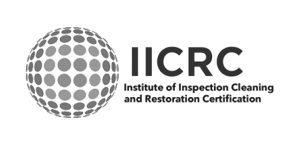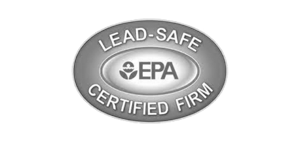Did you know that about 354,000 residential fires happen each year in the U.S.? Most of these fires cause damage from smoke and water, not the flames themselves. This shows that a lot of a home can be saved after a fire, with the right steps and quick action.
After a house fire, you face many challenges. These include fire damage, smoke damage, and water damage from the fire trucks. But, you can still fix your home. The U.S. Fire Administration says it’s key to call your insurance, make your home safe, and check it’s okay to go back inside.
Also, fixing any safety issues, like broken windows or cut utilities, is important. Using a home fire sprinkler system can help lessen damage and speed up recovery. Knowing about insurance laws, especially in states with valued policy laws, can help with the financial side of getting your home back.
Key Takeaways
- Approximately 354,000 residential fires happen annually in the U.S., with most damage caused by smoke and water.
- In 75% of fire cases, smoke and water damage are more prevalent than structural damage, aiding in restoration efforts.
- Immediate post-fire actions include contacting insurance, securing the property, and ensuring safe re-entry.
- Safety measures like home fire sprinkler systems can reduce damage and expedite cleanup.
- Understanding valued policy laws and insurance coverage, such as Replacement Cost Value (RCV) and Actual Cash Value (ACV), is crucial.
- A substantial portion of personal belongings, including electronics and furniture, can often be restored if addressed promptly after the fire.
Initial Steps to Take After a House Fire
After a house fire, your safety and property security are top priorities. First, call emergency services to handle the situation. Then, start cleaning up the fire damage.
The U.S. Fire Administration warns about handling documents and personal items with care. They might be contaminated, which can harm your health and slow down the recovery. It’s important to document all damage with photos and notes for insurance claims.
Insurance claims can be tricky, especially if you don’t know what’s covered. Staying in touch with relief agencies, insurance, and restoration services helps speed up the recovery.
Getting temporary housing is also crucial. The American Red Cross helps with this, as they respond to fires often. It can take days for fire-affected areas to be safe again, so temporary housing is needed.
Make sure to secure your property to avoid more damage and unauthorized entry. About 55% of homeowners don’t document damage before repairs start, which can make things harder. Water damage from firefighting adds to the costs, making up about 30% of the total expenses.
Following these steps can help you recover from a fire and reduce emotional stress. With over 353,000 home fires in the U.S. each year, it’s vital for homeowners to know these steps.
Can a House Be Saved After a Fire?
After a house fire, many wonder if their home can be saved. The answer depends on several key factors. These include the damage’s extent, how quickly help arrives, and the skills of fire restoration teams. Each year, over 350,000 American families face the challenges of house fires, dealing with both emotional and financial burdens.
Quick action is vital for fixing fire-damaged homes. Fire restoration services play a big role. They check if the structure is safe, clean up dangerous debris, and try to save personal items. Companies like Disaster Recovery Specialists stress the need for these experts to handle repairs well.
Advanced technologies help in saving homes after fires. For example, restoration teams use air scrubbers and special treatments to get rid of smoke smells. Acting fast can also prevent more damage, like water damage from firefighting efforts.
- Jewelry, ceramics, and metal items usually suffer less damage in fires.
- Experts can often fix electronics, documents, and textiles that look ruined.
- However, deeply smoked mattresses and furniture are often too costly to repair.
Restoring homes also means adding modern safety features. Installing fire sprinklers and using hygrometers to check humidity are good ideas. Hygrometers help stop mold and ensure the home dries properly after a fire. Also, getting the right building permits is key before starting repairs or rebuilding.
When deciding to restore or rebuild, cost is a big factor. If the fire damaged less than 30% of the home, recovery might be possible. Starting fire restoration services quickly can cut costs by up to 50%. Success in restoration depends on quick, professional help and using the latest techniques.
Conclusion
The chance of saving a home after a fire depends on many things. These include how quickly help arrives, following detailed restoration steps, and getting help from experts. Quick actions like securing the house and talking to fire damage experts can really help.
For example, homes prepared for fires are more likely to survive wildfires. The California Fire Marshal found that such homes have a higher survival rate.
Every year, 7,000 to 8,000 homes in the U.S. catch fire due to wildfires. The National Fire Protection Association says 80% of homes are at high risk. The cost to fix these homes can range from $2,000 to $50,000, depending on the damage.
But, acting fast and knowing what to do can save most homes. This saves money and emotional stress.
Studies from big fires in Lahaina and Paradise show that fire-resistant homes are more likely to survive. Even though fixing a home after a fire can be expensive, it’s crucial for keeping the house safe. The CDC warns that air quality after a fire is very dangerous, making professional cleaning and testing vital.
With careful planning and professional restoration help, rebuilding a home after a fire is possible. It not only fixes the house but also brings back peace and stability for those living there.













